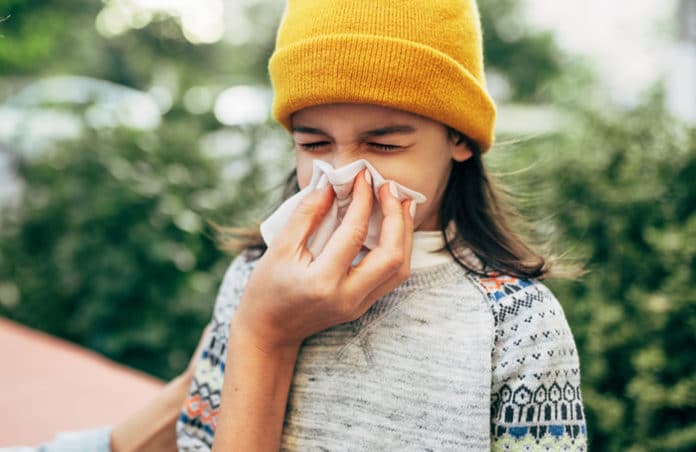According to a new study by the University of Queensland, compared to adult nostrils, the lining of children’s noses is more effective at preventing SARS-CoV-2 infections. This might be a reason why children’s immune responses have so far proven more effective at avoiding and fighting COVID-19, suggests scientists.
Scientists have shown that children’s noses have a more pro-inflammatory response to the ancestral SARS-CoV-2 than adult noses. But, the game appears to be different when it comes to the Omicron Variant.
Scientists collected samples of nasal lining cells from 23 healthy children and 15 healthy adults. They exposed these samples to SARS-CoV-2. They found that the virus replicated less efficiently in the children’s nasal cells and heightened antiviral response.
Dr. Kirsty Short from UQ’s School of Chemistry and Molecular Biosciences said, “There were several theories why.”
“It could be an adaptation to the increased threats of ‘foreign invaders’ such as viruses or bacteria observed in childhood.”
“It’s also possible that increased exposure to these threats in childhood ‘trains’ the nasal lining in children to mount a stronger pro-inflammatory response.”
“Or alternatively, metabolic differences between children and adults could alter how virus-fighting genes express themselves.”
Dr. Kirsty Short from UQ’s School of Chemistry and Molecular Biosciences said, “There were several theories why. It could be an adaptation to the increased threats of ‘foreign invaders’ such as viruses or bacteria observed in childhood.”
“It’s also possible that increased exposure to these threats in childhood ‘trains’ the nasal lining in children to mount a stronger pro-inflammatory response.”
“Or alternatively, metabolic differences between children and adults could alter how virus-fighting genes express themselves.”
The scientists discovered that the Delta COVID-19 variant was substantially less likely to replicate in the nasal cells of children than it did in adults. But in the case of Omicron, the trend was noticeably less significant.
Dr. Short said, “Taken together, it shows children’s nasal lining supports lower infection and replication of ancestral SARS-CoV-2, but this may be changing as the virus evolves.”
“Future clinical studies will be needed to validate these preliminary findings in a larger population and to determine the role of other factors, such as antibodies in protecting children from SARS-CoV-2 infection.”
Journal Reference:
- Yanshan Zhu, Keng Yih Chew, et al. Ancestral SARS-CoV-2, but not Omicron, replicates less efficiently in primary pediatric nasal epithelial cells. Plos Biology. DOI: 10.1371/journal.pbio.3001728
